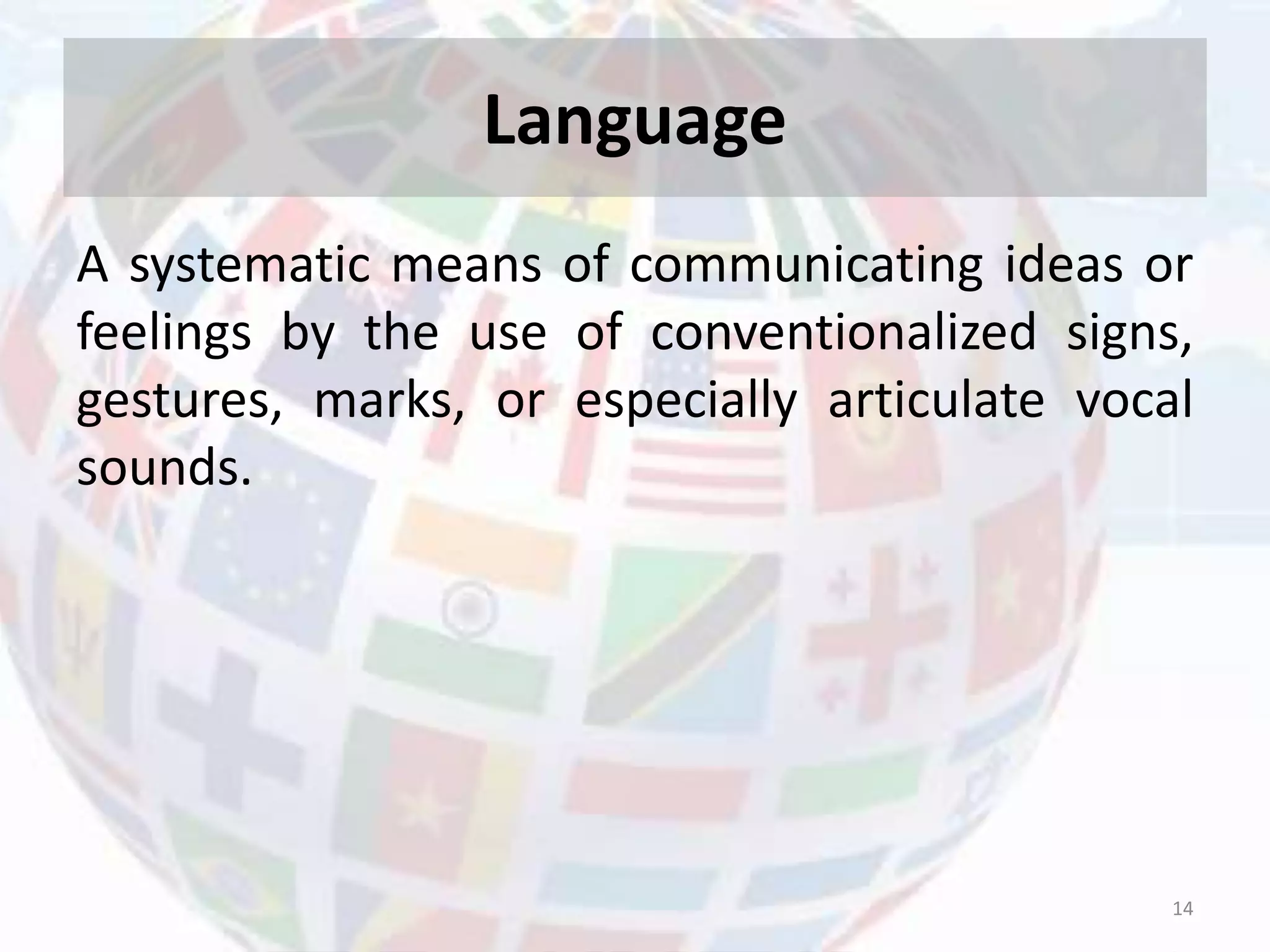Cultural factors significantly influence international business decisions. Managers must understand differences in cultural behaviors and values across countries. Culture encompasses various learned traits like values, norms, aesthetics, customs, language and religion. Frameworks like Hofstede's and Trompenaars' classify cultures based on dimensions such as individualism-collectivism, power distance, and time orientation. Managers must avoid ethnocentrism by considering perspectives beyond their own culture and redefining problems in local cultural contexts.






































